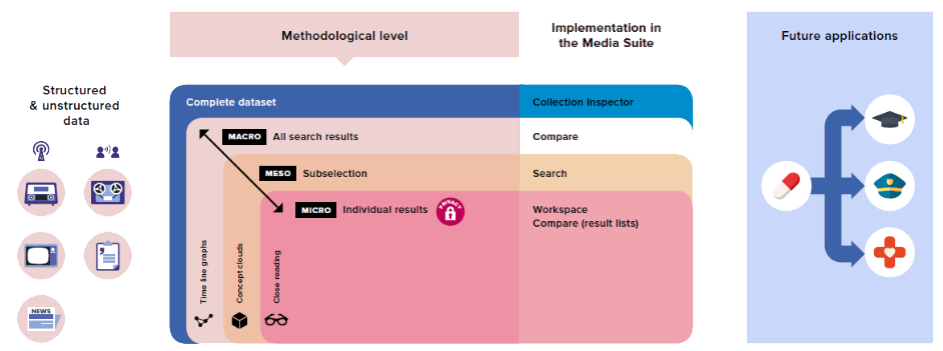From ecstasy discourse in Dutch media to medicine discourse in doctor-patient consultations
My name is Berrie van der Molen and I am glad to introduce myself as one of the researchers in the HoMed project. I will explain how I expect my academic profile and experience to connect to my research activities within HoMed.
My background is in media studies: I have a BA in Media and Culture and a research master’s degree in Media Studies, both from the University of Amsterdam. After I wrote a historical/theoretical account of different modes of celebrity in television, film and digital media as my thesis called Mediated Celebrity, I joined the Imperative of Regulation research project at Utrecht University in 2016. I brought my media studies expertise to one of the four research projects into the history of postwar drug regulation in the Netherlands. My doctoral project delved into the history of the relation between drug regulation and drug discourse in the Netherlands.
For a few months I have been taking my first steps in HoMed (more on that below), but I am also still working on what I hope will be the final version of my dissertation called Talking XTC. In Talking XTC I present the results of my research into public discourse about the drug ecstasy in Dutch newspapers and on Dutch radio. While breaking new methodological ground in the field of Digital Humanities, Talking XTC contributes to our understanding of shifts and developments in public drug discourse.
Talking XTC is becoming a work on the history of public discourse of the drug ecstasy in Dutch media, in newspapers and on the radio. For the two radio studies I was one of the first scholars to systematically research the radio debates using Automatic Speech Transcripts. This helped me to write a detailed account of the late 1980s origins and further development of the discursive formation of ecstasy. This is a remarkable story, because ecstasy seems to have so many meanings: it is a party drug, it is a criminal commodity, it is a medicine. Benefitting from access to so many newspaper articles and radio items in which ecstasy is mentioned really enabled me to construct a complex narrative of how these meanings interrelate.
Early on in the PhD project I was part of the CLARIAH research pilot called Debate Research Across Media (DReAM). In DReAM I collaborated with Sound and Vision developers to accommodate what I call the levelled approach in the CLARIAH media research infrastructure Media Suite. This research approach combines different distant reading visualization techniques (based on metadata) with close reading of the actual historical data. I came up with the levelled approach before I really started the historical analysis and I was able to test the approach in Texcavator.
 Further development of the levelled approach in HoMed.
Further development of the levelled approach in HoMed.
The methodological part of my doctoral research was one of the aspects of research that I enjoyed most. Developing the levelled approach methodology and contributing to its accommodation in the Media Suite infrastructure was very rewarding work. I am excited to have the chance to develop this path within HoMed. Of course, HoMed will focus on very different data: the infrastructure will be created to enable systematic search of the many different collections of sound and/or video recordings at Nivel. These collections comprise all kinds of highly privacy-sensitive doctor-patient consultation recordings.
This means that the debates analyzed in this context will be medical, which is new to me. Up until this point, I have used ASR metadata to analyze media debates. HoMed provides the opportunity of finding out how the levelled approach can help improve our understanding of medicine discourse: we might be able to enable research into shifting reputations of particular medicines over time, for instance. In a more applied sense, we will enable effective research on medical practices and patients’ understanding of different medicines.
We will apply ASR technology to enable search of these recordings, which comes with a number of technological challenges. The material is highly privacy-sensitive (unlike the national media datasets I previously worked with), and the acoustic quality of these consultation room recordings does not compare to the professionally recorded radio data. An important first stage of the research involves training the speech recogniser in recognising medical discourse. We want the speech recogniser to be able to “listen” to the consultations, so it needs to be aware of any medical term that might come up in them. As part of this information-gathering process I have been communicating with a number of medical research institutes in the Netherlands, and it’s been very encouraging to notice that there is a lot of interest in the type of technology applied to professional medical debates.
Within the team there is a wealth of experience and expertise with automatic speech recognition, which means I’m in the fortunate position to learn a lot from this project. I will work closely with the other postdoctoral researcher in the project, Cristian, who is an expert in this field and who will take on the technological implementation. I will be responsible for the more analytical/social sciences work within the project, but I also intend to develop my programming skills in the coming years. There is a lot to expect from HoMed and I’m sure that it won’t be long before we can share our first insights from the project.
Berrie
Contact:





